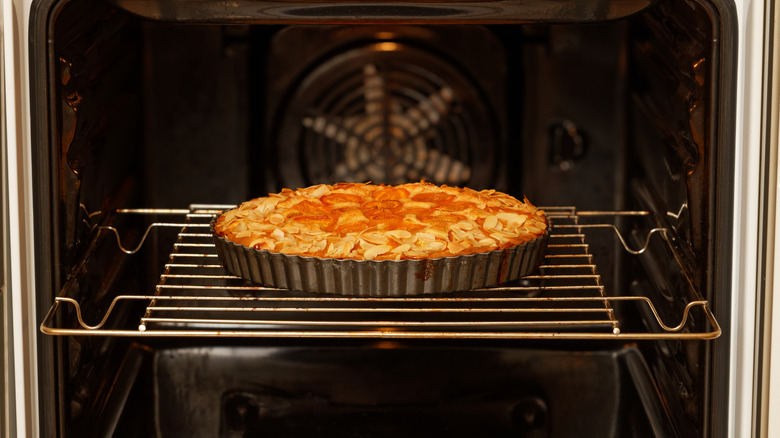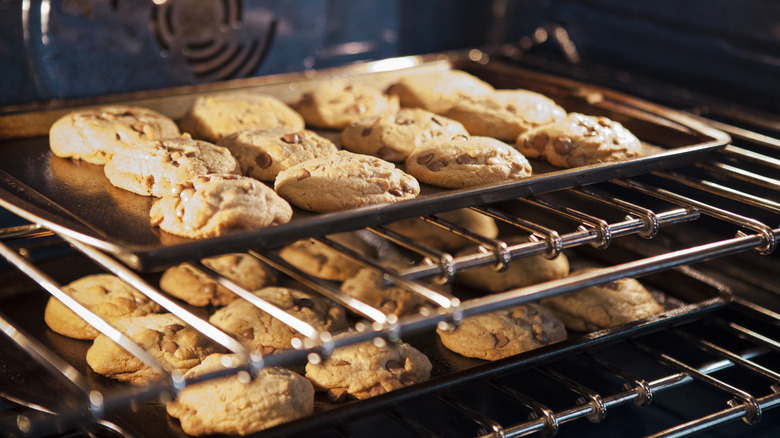Are Oven Hot Spots Ruining Your Food?
Almost every recipe that involves an oven will specify a cooking temperature. The tricky part, however, is getting the oven to cooperate. Sure, each oven has a dial for setting the temperature, but even if your oven temperature is accurate, which you can check with this sugar trick, there are likely to be hot spots. Stephanie Loaiza, a food blogger who shares meal ideas and recipes at Six Sisters' Stuff, explained, "A hot spot is an area in an oven that tends to run hotter than the rest, similar to hot spots on a grill. All ovens have oven hot spots, due to structural elements like heating coils or steel sides, as well as the flow of air in the oven itself."
Hot spots may be a given, but there is potential for them to adversely affect your baked goods since any items in a more temperature-intensive area might burn. Baked goods may also fail to cook evenly or not rise as expected. The hotter areas are usually near the heating elements, of course, as well as the sides of the oven. "And the top — because heat rises!" pointed out Loaiza. The fact that many recipes specify an oven rack position also reflects that where a dish is placed will affect the cooking temperature. According to Loaiza, crispy-bottomed pizza crust requires the bottom rack. A cheese-topped casserole, on the other hand, will need to be finished off on the top rack for the cheese to get melty and slightly brown. "More even, sustained cooking throughout? Go for the middle rack," she advised.
How to find your oven's hot spots
One way to locate the hot spots inside your oven is similar to finding hot spots on a grill. It involves using a loaf of bread — white bread is preferable because it shows the color changes better. Spread bread slices over a sheet pan, and then bake them for five to 10 minutes in a preheated oven at 350 degrees Fahrenheit. Once you remove the pan, Stephanie Loaiza said, "You'll be able to see where the hot spots in your oven are by looking at how the bread is toasted. Darker spots are hotter, while paler spots are cooler." The experiment should be performed several times. "Repeat this process on the different racks to determine how the heat varies not just from side to side but from top to bottom as well," explained Loaiza.
While it is possible for oven hot spots to harm your food if you're unaware of them, they're not a defect. "You can use these hot spots to your advantage, just like you would a grill, by keeping them in mind when you want something a little more roasted or rotating food as needed to ensure even cooking," Loaiza suggested. Of course, if you really want to make sure your cookies come out perfect, you can always bake a test batch to determine just how the hot spots affect them.

